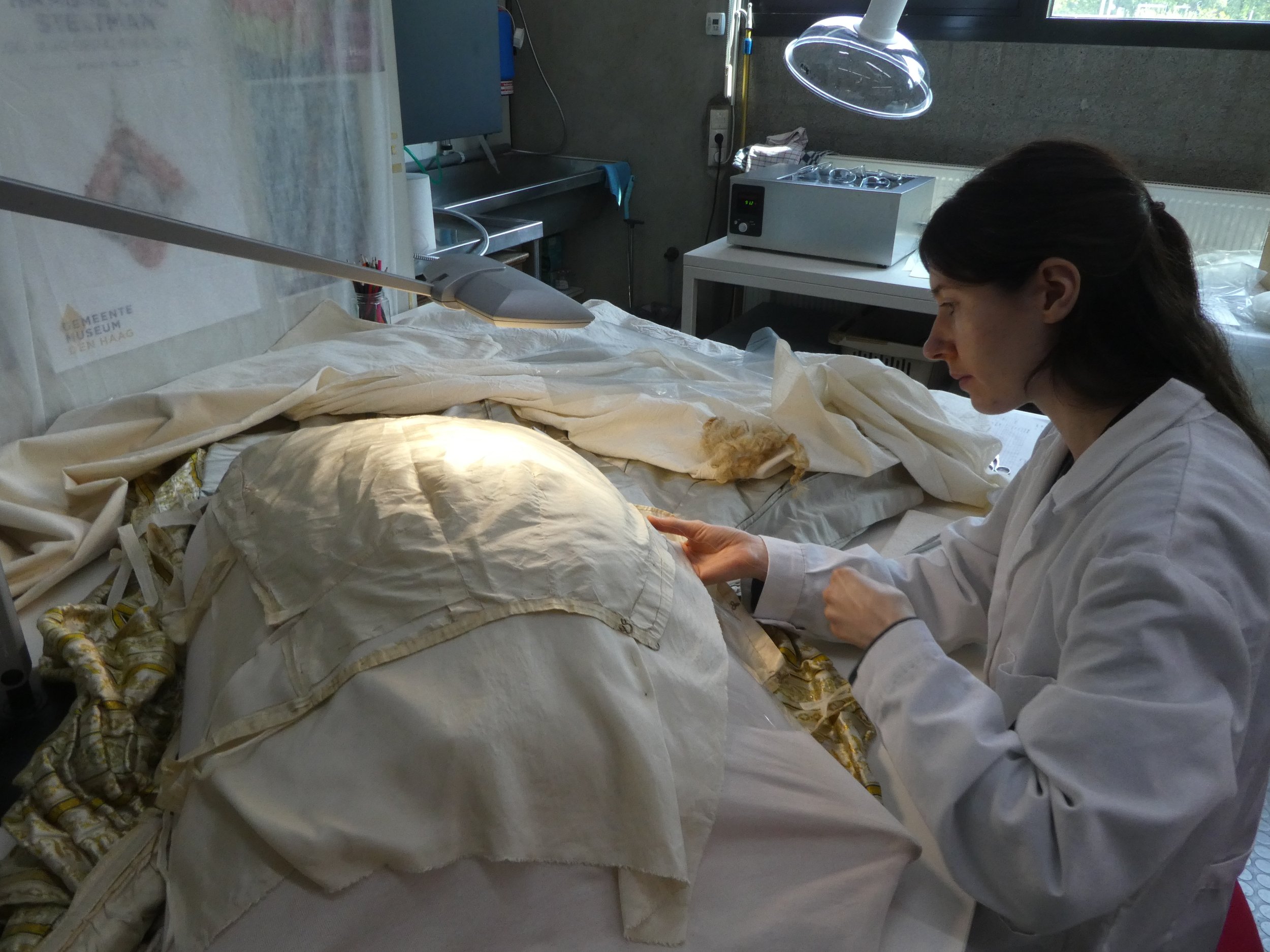
House of Worth gown
The House of Worth gown was my main project during my internship at the Kunstmuseum, Den Haag. Created in 1885, this gown is a flamboyant example of Charles Frederick Worth’s work. Worth was a British designer who worked in Paris, and is considered to have pioneered the concept of haute couture. This dress is one of the most important pieces in the Kunstmuseum’s collection.
The gown had many tears in the fabric. In the outer, patterned fabric, this was caused by the weave structure itself, with the interaction between very fine silk threads and metal threads causing weakness and breakage of fibres.
The gown had been previously conserved to repair many of these tears, but some of this conservation was no longer functional and in some areas was harming the textile and causing new tears to form.
The lace trims of the gown also required attention as they were dirtied and creased.

Tear in gown before treatment

Tear in gown after treatment



Underskirt after treatment

Underskirt before treatment

Washing the lace trims

Conserving the internal panels
The tears in the outer fabric were repaired by performing conservation stitching with a silk crepeline support, which was dyed to camouflage the tear further. While sewing, it was ensured that the floating threads around the tears were flat and aligned. For the internal panels, a full support of dyed pongee silk was used, with couching stitches to repair the tears. The treatment of the tears in the outer fabric and internal panels increased the stability of the textile and improved the appearance.
The lace trims on the collar and cuffs were washed without detergent, instead using adjusted conductivity and pH, which removes the risk of residues remaining on the fibres. The lace became cleaner, brighter and less creased.
The trims on the underskirt were aesthetically improved with humidification treatment, which removed creases and straightened the pleats.

